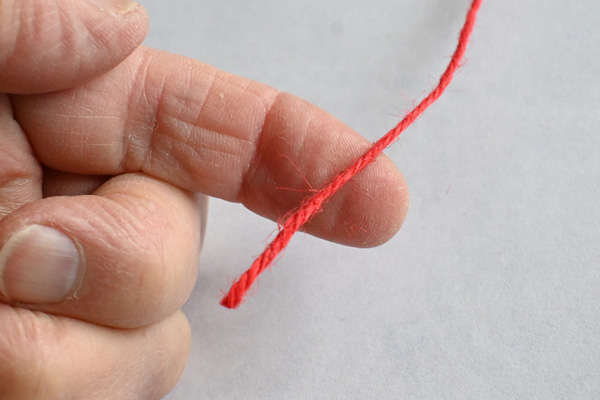
Making a slipknot ~ Take one end of the thread
This is an elegantly simple knot ~ it involves making two loops and passing one through the other. The demonstration of this needs pictures ~ rather than words ~ for an explanation.
There are some important comments to be made on variations ~ and inadequacies ~ [later!].


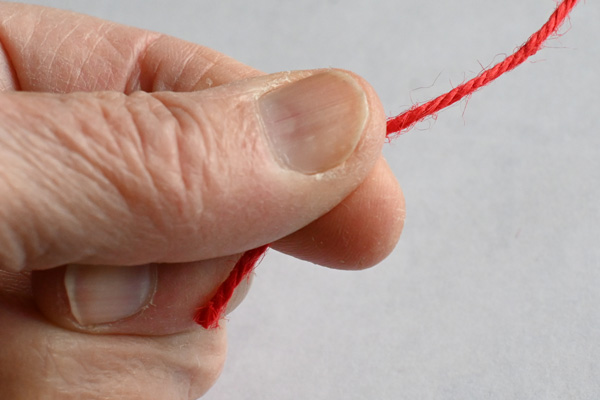
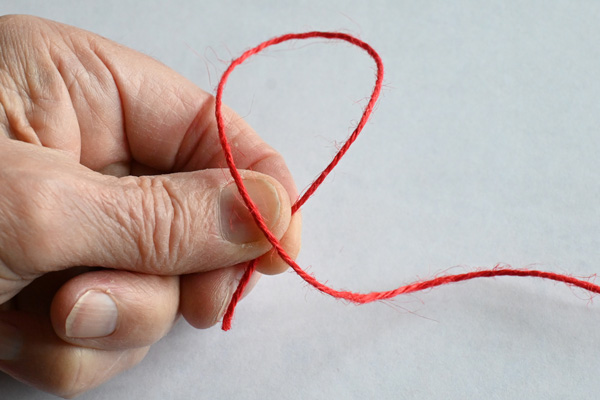
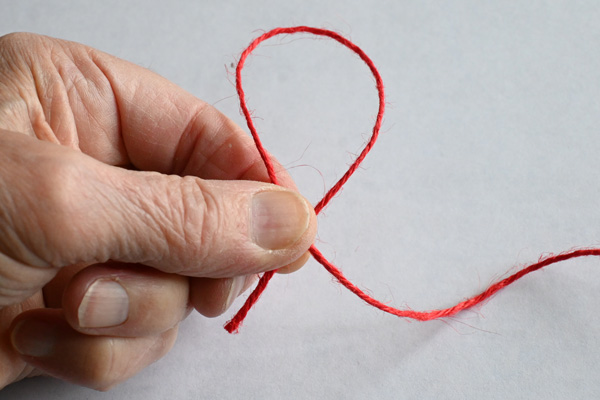

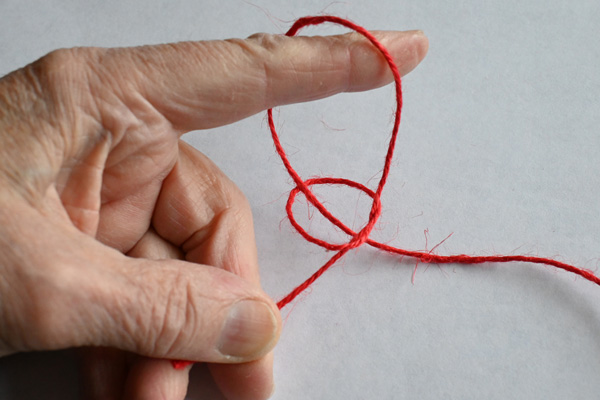
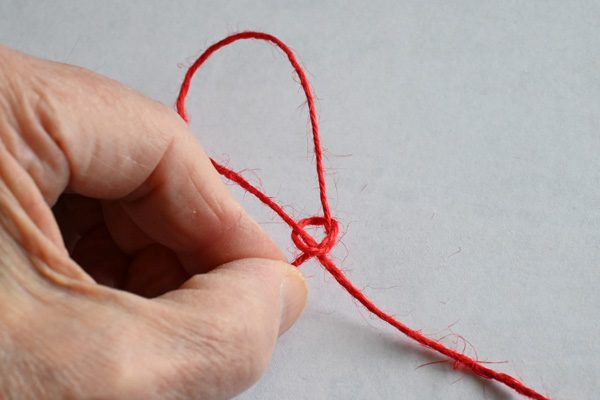
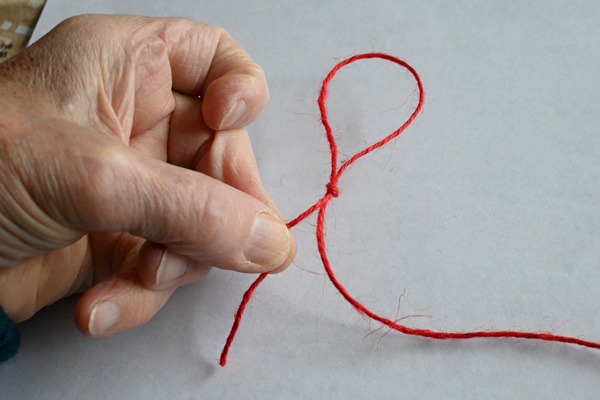
At this stage we have made a simple knot around one part of a bight ~ loop ~ of thread. If this simple knot is pulled very tight then it will no longer slip ~ which changes the size of the main loop. (If you do not want it to slip then tie a bowline [*].) If it is too loose then there is a danger that things will unravel or get out of control.
'How tight is tight?' is a reasonable question to ask. It depends on the strength of the thread ~ on the slipperiness of the thread (Waxed thread is slippery. The thread shown is hairy ~ some people call it twine ~ and it is not slippery.)
How tight are you are able to pull on the various threads? You have to gain experience to get everything the way you want it ~ and depending on what you are doing. (Pulling on the the 'wrong' threads is a common error.)
